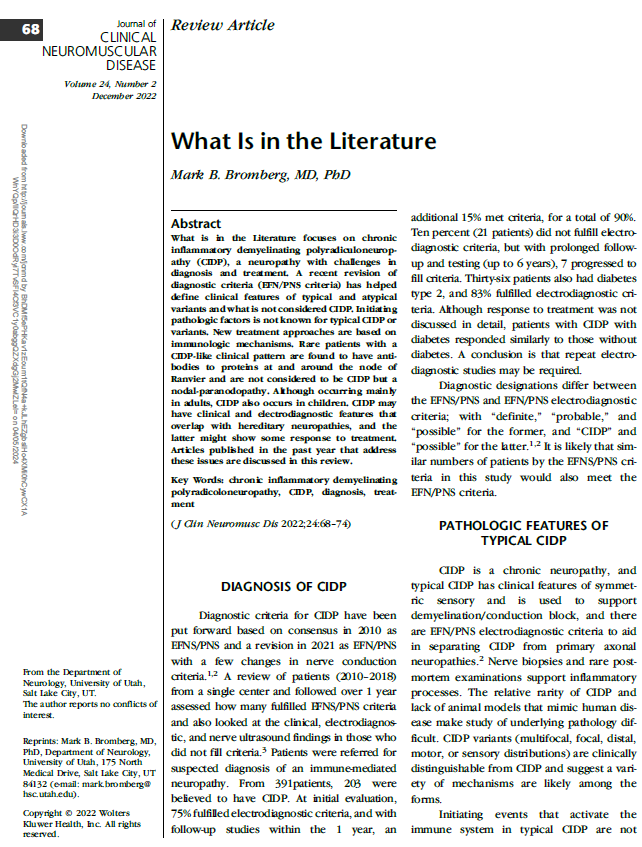What Is in the Literature
December 2022
Abstract
What is in the Literature focuses on chronic inflammatory demyelinating polyradiculoneuropathy (CIDP), a neuropathy with challenges in diagnosis and treatment. A recent revision of diagnostic criteria (EFN/PNS criteria) has helped define clinical features of typical and atypical variants and what is not considered CIDP. Initiating pathologic factors is not known for typical CIDP or variants. New treatment approaches are based on immunologic mechanisms.
Rare patients with a CIDP-like clinical pattern are found to have antibodies to proteins at and around the node of Ranvier and are not considered to be CIDP but a nodal-paranodopathy. Although occurring mainly in adults, CIDP also occurs in children.
CIDP may have clinical and electrodiagnostic features that overlap with hereditary neuropathies, and the latter might show some response to treatment. Articles published in the past year that address these issues are discussed in this review.

